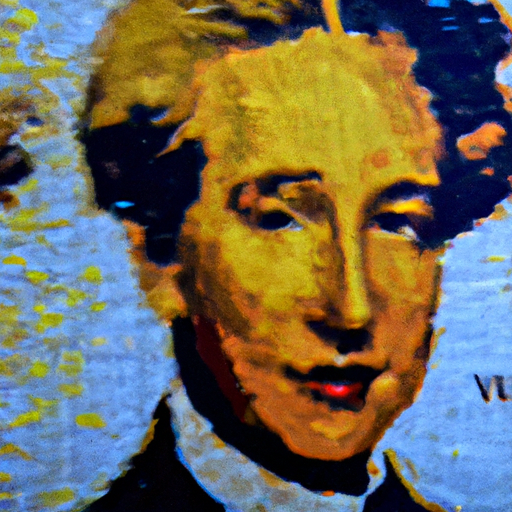
-
Table of Contents
Impressionism’s Influence on Contemporary Design

Impressionism, an art movement that emerged in the late 19th century, has had a profound impact on various forms of artistic expression. While primarily associated with painting, its influence extends beyond the canvas and has found its way into contemporary design. This article explores how impressionism has shaped and continues to influence contemporary design, from interior design to fashion and graphic design.
1. Impressionism and Interior Design
Impressionism’s emphasis on capturing the fleeting effects of light and color has greatly influenced interior design. The movement’s focus on creating a sense of atmosphere and mood has led to the use of soft, pastel colors, and the incorporation of natural light into interior spaces. Impressionist-inspired interiors often feature open floor plans, large windows, and light, airy fabrics.
One example of impressionism’s influence on interior design is the use of color palettes inspired by famous impressionist paintings. Designers often draw inspiration from works by artists such as Claude Monet or Pierre-Auguste Renoir to create harmonious and visually appealing spaces. The use of soft, muted colors and the blending of different shades to create a sense of depth and movement are common techniques derived from impressionism.
Another aspect of impressionism that has influenced interior design is the focus on capturing the essence of a moment. This can be seen in the use of natural materials, such as wood and stone, which evoke a sense of timelessness and connection to nature. Additionally, the use of textured surfaces and fabrics adds depth and visual interest to interior spaces, reminiscent of the brushstrokes used in impressionist paintings.
2. Impressionism and Fashion
The influence of impressionism on fashion can be seen in the use of soft, flowing fabrics, delicate prints, and a focus on capturing movement. The emphasis on light and color in impressionist paintings has translated into the use of pastel hues and the incorporation of subtle, gradient effects in textiles.
Designers often draw inspiration from impressionist paintings to create unique and visually striking garments. For example, the iconic water lily paintings by Monet have inspired numerous fashion collections, with designers incorporating the vibrant colors and organic shapes into their designs. The use of impressionist-inspired prints and patterns can be seen in both high-end fashion and ready-to-wear collections.
Furthermore, the concept of capturing a fleeting moment in time, which is central to impressionism, has influenced the design of garments that evoke movement and fluidity. Flowing dresses, loose silhouettes, and the use of lightweight fabrics create a sense of dynamism and freedom, reminiscent of the brushstrokes and energy found in impressionist paintings.
3. Impressionism and Graphic Design
The principles of impressionism have also found their way into graphic design, shaping the way visual communication is approached. The movement’s emphasis on capturing the essence of a subject rather than its precise details has influenced the use of abstract and simplified forms in graphic design.
One example of impressionism’s influence on graphic design is the use of blurred or softened edges to create a sense of movement and depth. This technique, known as “feathering,” is often used to add a sense of atmosphere and to create a more organic and natural feel to designs. It can be seen in various forms of visual communication, from advertisements to website design.
Another aspect of impressionism that has influenced graphic design is the use of color to evoke emotion and create a specific mood. Designers often draw inspiration from impressionist color palettes to create visually appealing and impactful designs. The use of complementary colors, subtle gradients, and the blending of different hues can be seen in contemporary graphic design, adding depth and visual interest to compositions.
4. Impressionism’s Enduring Influence
The influence of impressionism on contemporary design is undeniable. Its emphasis on capturing light, color, and atmosphere has shaped the way we approach interior design, fashion, and graphic design. By incorporating impressionist techniques and principles, designers are able to create visually appealing and emotionally engaging experiences.
Impressionism’s influence can be seen in the use of soft, pastel colors, the incorporation of natural light, and the focus on capturing a sense of movement and atmosphere. Whether it’s through the use of impressionist-inspired color palettes in interior design, the incorporation of delicate prints and flowing fabrics in fashion, or the use of abstract forms and evocative color schemes in graphic design, impressionism continues to inspire and shape contemporary design.
Conclusion
Impressionism’s impact on contemporary design is far-reaching and continues to shape the way we approach various forms of artistic expression. From interior design to fashion and graphic design, the movement’s emphasis on capturing light, color, and atmosphere has influenced the use of soft, pastel colors, the incorporation of natural elements, and the creation of visually engaging compositions.
By drawing inspiration from impressionist techniques and principles, designers are able to create harmonious and emotionally impactful experiences. Whether it’s through the use of impressionist-inspired color palettes, the incorporation of delicate prints and flowing fabrics, or the use of abstract forms and evocative color schemes, impressionism’s influence on contemporary design is undeniable.
